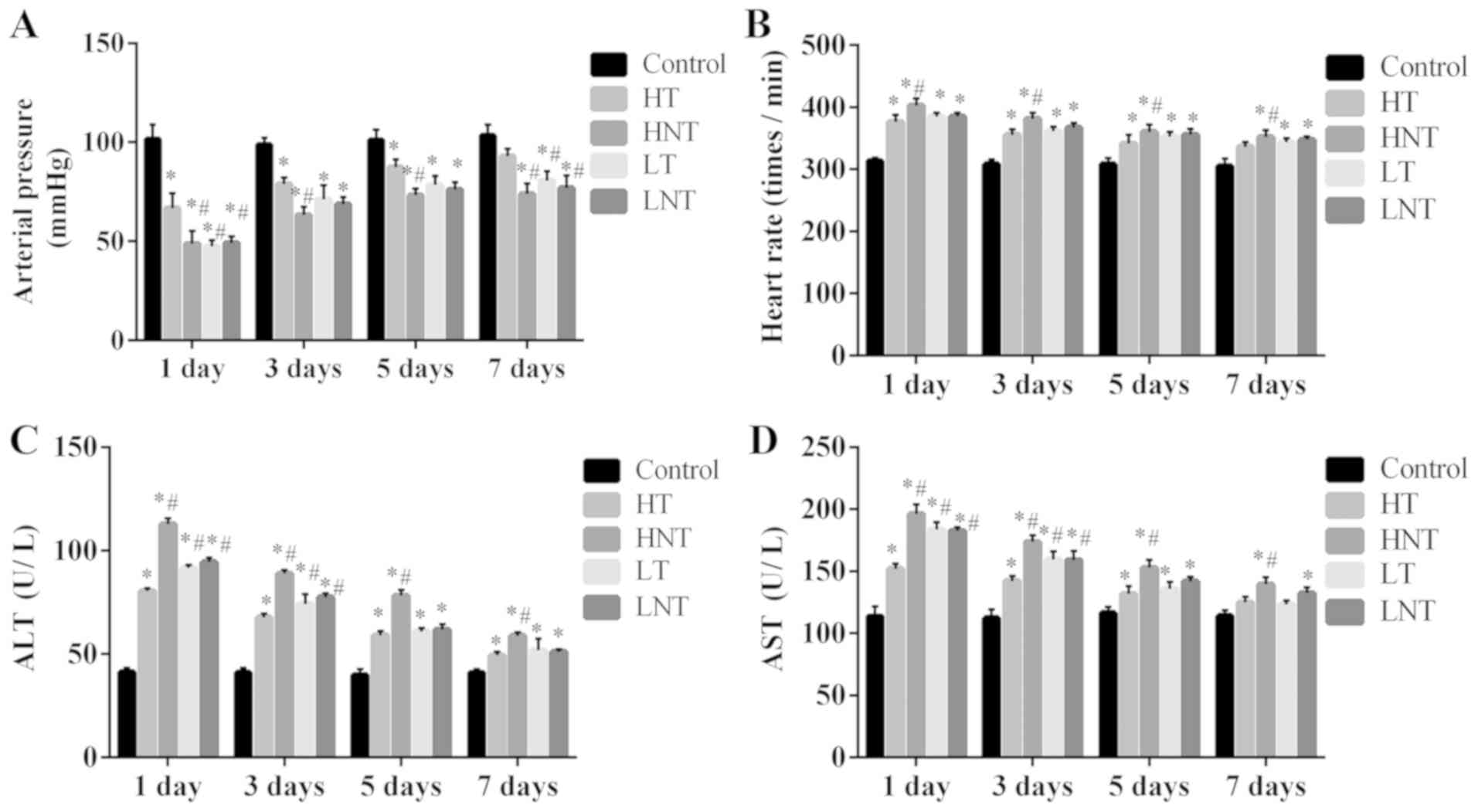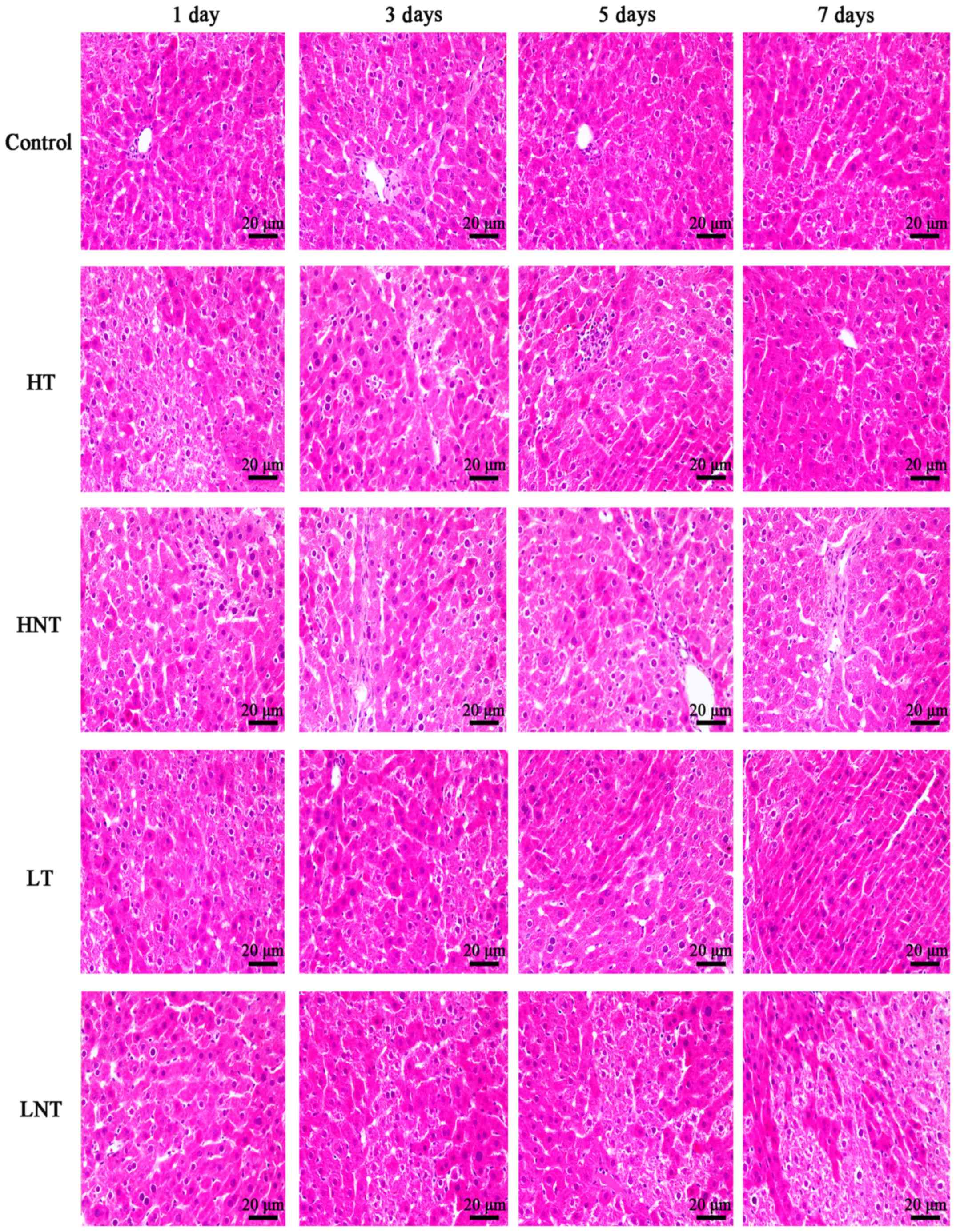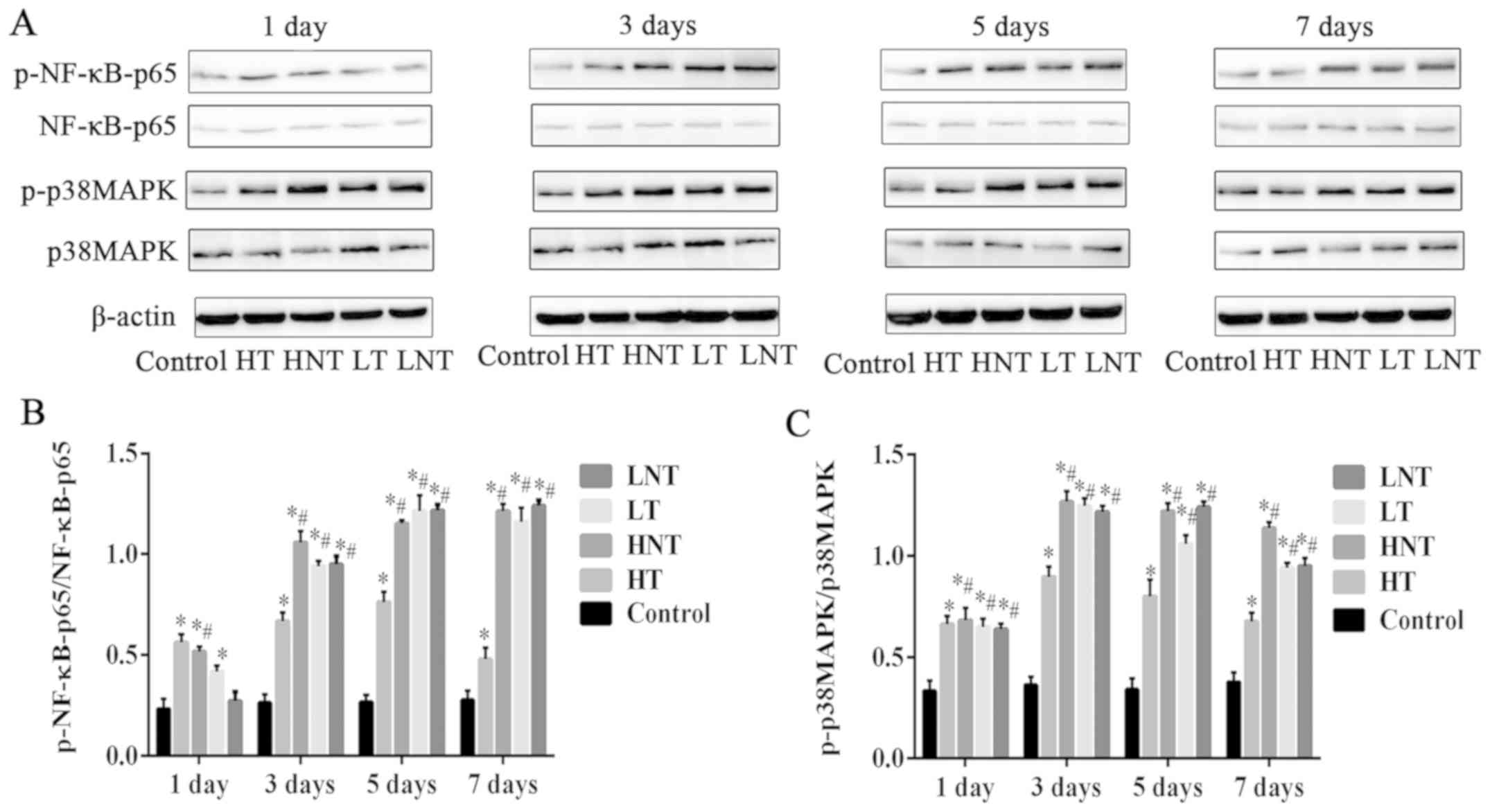|
1
|
Schulte W, Bernhagen J and Bucala R:
Cytokines in Sepsis: Potent immunoregulators and potential
therapeutic targets-an updated view. Mediators Inflamm.
2013:1659742013. View Article : Google Scholar : PubMed/NCBI
|
|
2
|
Yan J and Li S and Li S: The role of the
liver in sepsis. Int Rev Immunol. 33:498–510. 2014. View Article : Google Scholar : PubMed/NCBI
|
|
3
|
Ryan T, Coakley JD and Martinloeches I:
Defects in innate and adaptive immunity in patients with sepsis and
health care associated infection. Ann Transl Med. 5:4472017.
View Article : Google Scholar : PubMed/NCBI
|
|
4
|
Dewitte A, Lepreux S, Villeneuve J,
Rigothier C, Combe C, Ouattara A and Ripoche J: Blood platelets and
sepsis pathophysiology: A new therapeutic prospect in critical
[corrected] ill patients? Ann Intensive Care. 7:1152017. View Article : Google Scholar : PubMed/NCBI
|
|
5
|
Shi LL and Han YQ: Research advance of
sepsis related coagulation and inflammation biomarkers. Medical
Recapitulate. 5:873–877. 2016.(In Chinese).
|
|
6
|
Spoto S, Valeriani E and Costantino S:
Nosography of systemic inflammatory response syndrome, sepsis,
severe sepsis, septic shock and multiple organ dysfunction syndrome
in internal medicine patients. Italian J Med. 9:243–251. 2015.
View Article : Google Scholar
|
|
7
|
Michalek J, Svetlikova P, Fedora M,
Klimovic M, Klapacova L, Bartosova D, Hrstkova H and Hubacek JA:
Interleukin-6 gene variants and the risk of sepsis development in
children. Hum Immunol. 68:756–760. 2007. View Article : Google Scholar : PubMed/NCBI
|
|
8
|
Bozza FA, Salluh JI, Japiassu AM, Soares
M, Assis EF, Gomes RN, Bozza MT, Castro-Faria-Neto HC and Bozza PT:
Cytokine profiles as markers of disease severity in sepsis: A
multiplex analysis. Crit Care. 11:R492007. View Article : Google Scholar : PubMed/NCBI
|
|
9
|
Alexandrov PN, Kruck TP and Lukiw WJ:
Nanomolar aluminum induces expression of the inflammatory systemic
biomarker C-reactive protein (CRP) in human brain microvessel
endothelial cells (hBMECs). J Inorg Biochem. 152:210–213. 2015.
View Article : Google Scholar : PubMed/NCBI
|
|
10
|
Mayer CM, Gruben HJ, Land EM, Scharnag H
and Marz W: W12-P-038 Statin induced inhibition of CRP expression
in primary human hepatocytes. Atherosclerosis. 6:70–71. 2005.
View Article : Google Scholar
|
|
11
|
Memiş D, Gursoy O, Tasdogan M, Süt N, Kurt
I, Türe M and Karamanlioğlu B: High C-reactive protein and low
cholesterol levels are prognostic markers of survival in severe
sepsis. J Clin Anesth. 19:186–191. 2007. View Article : Google Scholar : PubMed/NCBI
|
|
12
|
Ji Y, Zheng MF, Ye SG, Wu XB and Chen JY:
Agrocybe aegerita polysaccharide combined with chemotherapy
improves tumor necrosis factor-α and interferon-γ levels in rat
esophageal carcinoma. Dis Esophagus. 26:859–863. 2013. View Article : Google Scholar : PubMed/NCBI
|
|
13
|
Valentine L, Potts R and Premenko-Lanier
M: CD8+ T cell derived IFN-γ prevents infection by a second
heterologous virus. J Immunol. 189:5841–5848. 2012. View Article : Google Scholar : PubMed/NCBI
|
|
14
|
Lin CF, Lin CM, Lee KY, Wu SY, Feng PH,
Chen KY, Chuang HC, Chen CL, Wang YC, Tseng PC and Tsai TT: Escape
from IFN-γ-dependent immunosurveillance in tumorigenesis. J Biomed
Sci. 24:102017. View Article : Google Scholar : PubMed/NCBI
|
|
15
|
Conway-Campbell BL, George CL, Pooley JR,
Knight DM, Norman MR, Hager GL and Lightman SL: The HSP90 molecular
chaperone cycle regulates cyclical transcriptional dynamics of the
glucocorticoid receptor and its coregulatory molecules CBP/p300
during ultradian ligand treatment. Mol Endocrinol. 25:944–954.
2011. View Article : Google Scholar : PubMed/NCBI
|
|
16
|
Oppert M, Schindler R, Husung C, Offermann
K, Gräf KJ, Boenisch O, Barckow D, Frei U and Eckardt KU: Low-dose
hydrocortisone improves shock reversal and reduces cytokine levels
in early hyperdy-namic septic shock. Crit Care Med. 33:2457–2464.
2005. View Article : Google Scholar : PubMed/NCBI
|
|
17
|
Xiang G, Fan M, Ma Y, Wang M, Gao J, Chen
J, Li X, Xue W, Wang Y, Gao H, et al: Anti-inflammatory actions of
Caesalpinin M2 in experimental colitis as a selective glucocoricoid
receptor modulator. Biochem Pharmacol. 150:150–159. 2018.
View Article : Google Scholar : PubMed/NCBI
|
|
18
|
Annane D, Bellissant E, Bollaert PE,
Briegel J, Confalonieri M, De Gaudio R, Keh D, Kupfer Y, Oppert M
and Meduri GU: Corticosteroids in thetreatment of severe sepsis and
septic shock in adults: A systematic review. JAMA. 301:2362–2375.
2009. View Article : Google Scholar : PubMed/NCBI
|
|
19
|
Laviolle B, Annane D, Fougerou C and
Bellissant E: Gluco- and mineralocorticoid biological effects of a
7-day treatment with low doses of hydrocortisone and
fludrocortisone in septic shock. Intensive Care Med. 38:1306–1314.
2012. View Article : Google Scholar : PubMed/NCBI
|
|
20
|
Shapiro NI, Trzeciak S, Hollander JE,
Birkhahn R, Otero R, Osborn TM, Moretti E, Nguyen HB, Gunnerson K,
Milzman D, et al: The diagnostic accuracy of plasma neutrophil
gelatinase-associated lipocalin in the prediction of acute kidney
injury in emergency department patients with suspected sepsis. Ann
Emerg Med. 56:52–59.e1. 2010. View Article : Google Scholar : PubMed/NCBI
|
|
21
|
Cheng B, Xie G, Yao S, Wu X, Guo Q, Gu M,
Fang Q, Xu Q, Wang D, Jin Y, et al: Epidemiology of severe sepsis
in critically ill surgical patients in ten university hospitals in
China. Crit Care Med. 35:2538–2546. 2007. View Article : Google Scholar : PubMed/NCBI
|
|
22
|
Yu H, Chi D, Wang S and Liu B: Effect of
early goal-directed therapy on mortality in patients with severe
sepsis or septic shock: A meta-analysis of randomised controlled
trials. BMJ Open. 6:e0083302016. View Article : Google Scholar : PubMed/NCBI
|
|
23
|
Walton E, Oliveros H and Villamor E:
Hemoglobin concentration and parasitemia on hospital admission
predict risk of multiple organ dysfunction syndrome among adults
with malaria. Am J Trop Med Hyg. 91:50–53. 2014. View Article : Google Scholar : PubMed/NCBI
|
|
24
|
Bone R, Fisher CJ Jr, Clemmer TP, Slotman
GJ, Metz CA and Balk RA: A controlled trial of high-dose
methylprednisolone in the treatment of severe sepsis and septic
shock. N Engl J Med. 317:653–658. 1987. View Article : Google Scholar : PubMed/NCBI
|
|
25
|
Zhao Y and Ding C: Effects of
hydrocortisone on regulating inflammation, hemodynamic stability,
and preventing shock in severe sepsis patients. Med Sci Monit.
24:3612–3619. 2018. View Article : Google Scholar : PubMed/NCBI
|
|
26
|
Greenberg SB and Coursin DB: Timing of
corticosteroids in refractory septic shock: A key or wishful
thinking? Crit Care Med. 42:1733–1735. 2014. View Article : Google Scholar : PubMed/NCBI
|
|
27
|
Lu J, Wang X, Chen Q, Chen M, Cheng L, Dai
L, Jiang H and Sun Z: The effect of early goal-directed therapy on
mortality in patients with severe sepsis and septic shock: A
meta-analysis. J Surg Res. 202:389–397. 2016. View Article : Google Scholar : PubMed/NCBI
|
|
28
|
Yousif NG, Hadi NR, Alamran F and Zigam
QA: Cardioprotective effects of irbesartan in polymicrobial sepsis:
The role of the p38MAPK/NF-κB signaling pathway. Herz. 43:140–145.
2018. View Article : Google Scholar : PubMed/NCBI
|
|
29
|
Cuzzocrea S, Crisafulli C, Mazzon E,
Esposito E, Muià C, Abdelrahman M, Di Paola R and Thiemermann C:
Inhibition of glycogen synthase kinase-3beta attenuates the
development of carrageenan-induced lung injury in mice. Br J
Pharmacol. 149:687–702. 2006. View Article : Google Scholar : PubMed/NCBI
|
|
30
|
Eisenhut M: Comment on ‘Duration and
intensity of NF-kappa B activity determine the severity of
endotoxin-induced acute lung injury’. J Immunol. 177:20382006.
View Article : Google Scholar : PubMed/NCBI
|
|
31
|
Kim SH and Shin TY: Anti-inflammatory
effect of leaves of Eriobotrya japonica, correlating with
attenuation of p38 MAPK, ERK and NF-kappaB activation in mast
cells. Toxicol In Vitro. 23:1215–1219. 2009. View Article : Google Scholar : PubMed/NCBI
|
|
32
|
Ishibashi Y, Matsui T, Ueda S, Fukami K
and Yamagishi SI: Advanced glycation end products potentiate
citrated plasma-evoked oxidative and inflammatory reactions in
endothelial cells by up-regulating protease-activated receptor-1
expression. Cardiovasc Diabetol. 13:602014. View Article : Google Scholar : PubMed/NCBI
|


















